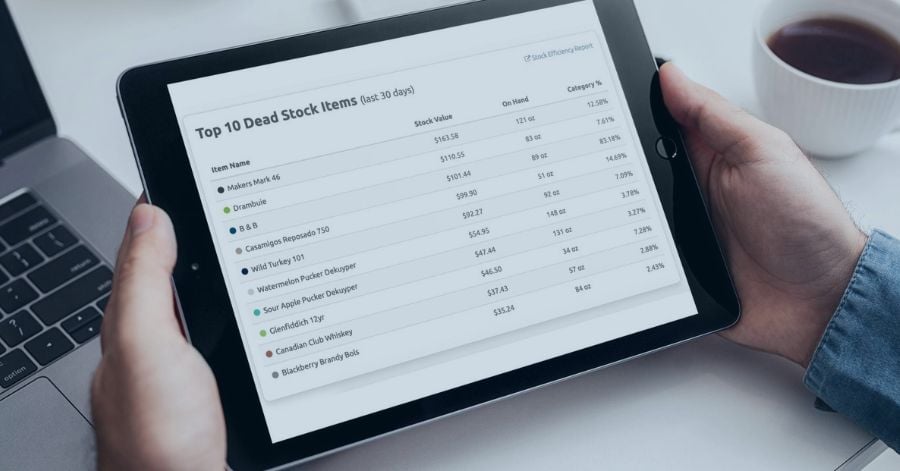The restaurant hustle never sleeps, and neither do the challenges that come with it. As a restaurant manager, you’ve likely experienced your fair share of inaccurate inventory, inefficient processes, product waste, and potentially even lower-than-expected profit margins.
Thankfully, there’s a solution that can solve many of these challenges that you’re experiencing. Restaurant inventory software.
Is it your dream to run a kitchen where every ingredient is accounted for with precision, processes that flow seamlessly, and where waste is minimized paving the way for healthier profit margins?
The right restaurant inventory software isn’t just a tool; it’s a secret weapon that will transform your challenges and help you achieve profitable growth. With that in mind, we’re going to help you choose the best restaurant inventory software for your business.
The Importance of Efficient Restaurant Inventory Management
Before delving into some key criteria that will help you choose the best restaurant inventory software, it’s first essential to understand why effective inventory management is critical for your restaurant. Here are some of the top reasons.
Cost Control: Restaurants operate on thin profit margins, making cost control paramount. Efficient inventory management helps prevent overstocking or understocking, reducing unnecessary expenses and preventing food waste.
Improved Efficiency: Manual inventory tracking through the use of a spreadsheet is time-consuming and prone to errors. The right software automates these processes, saving time and allowing restaurant staff to focus on more value-added tasks.
Enhanced Accuracy: Accurate inventory data is essential for making informed decisions. A reliable inventory management system minimizes errors and ensures that stock levels are always up-to-date.
Higher Profit Margins: An effective restaurant inventory strategy will give your business the data it needs to increase profit margins. You’ll gain insights into which dishes customers like, where you save money and reduce waste, and what your highest profit menu items are.
What is Restaurant Inventory Software?
So, how does restaurant inventory software come into your strategy? Restaurant inventory software is a specialized digital solution designed to streamline and optimize the management of a restaurant's inventory.
This software automates various aspects of inventory tracking, ordering, and management, replacing traditional manual methods - such as spreadsheets - with more efficient and accurate processes.
At its core, restaurant inventory software provides a centralized platform where all inventory-related data is stored and easily accessible. This includes information about stock levels, product details, supplier information, and historical data.
Key functionalities of restaurant inventory software include:
- Automated ordering
- Key metrics and KPIs that give you more visibility and control of your inventory
- Integration with other systems, such as your point-of-sale (POS) system
- Supplier management
Key Features to Look for in Restaurant Inventory Software
1. A User-Friendly InterfaceThe best restaurant inventory software should have an intuitive and user-friendly interface. Restaurant staff, including chefs and managers, should be able to navigate the system easily without extensive training. Look for software that simplifies complex inventory processes and provides a seamless experience.
2. Integration CapabilitiesSeamless integration with other restaurant management systems, such as point-of-sale systems and accounting software, is essential. This ensures that data flows effortlessly between different functions, providing a holistic view of restaurant operations. Integration capabilities contribute to a more cohesive and efficient business environment.
3. Third-Party ExpertiseOne of the most overlooked aspects of inventory systems in many restaurants is the support that is offered along with the technology. To help maximize your ROI of inventory software it’s critical that you work with a provider who can offer expert advice and consultation. Here at Sculpture Hospitality, for example, we stand out for having a team of local industry experts who help you implement and manage your technology successfully.
Learn more about the importance of expert support in our blog, Why Successful Bar Inventory Requires Both Tech and Expert Support.
4. Automated ReportingComprehensive and customizable reporting features are essential for informed decision-making. Look for software that provides automated reports on key performance indicators (KPIs), inventory turnover, and stock levels. Customizable reports enable restaurant managers to tailor insights according to their specific needs.
5. Forecasting and AnalyticsThe ability to forecast demand and analyze trends is a game-changer in restaurant inventory management. Advanced software should incorporate predictive analytics to help managers anticipate fluctuations in demand, optimize stock levels, and minimize waste.
6. ScalabilityChoose a restaurant inventory software that can grow with your business. Scalability is crucial for adapting to changes in the size and scope of the restaurant. Whether opening new locations or expanding the menu, the software should be able to accommodate the evolving needs of the business.
Further Considerations for Your Budget and Implementation
In addition to the above, there are some further considerations you should think about specifically when it comes to your restaurant’s budget and the implementation process of the technology.
Cost: Evaluate the total cost of ownership, including licensing fees, training costs, and potential additional expenses. While it's tempting to opt for the least expensive option, consider the long-term benefits and return on investment (ROI) of a more advanced and feature-rich solution.
Implementation Time: Assess the implementation timeline and evaluate whether the restaurant can afford the downtime associated with transitioning to the new system. A smooth and efficient implementation process is crucial to minimize disruptions in daily operations.
Customer Support: This ties back into our earlier point about receiving third-party expertise in addition to your technology. Choose a software provider that offers reliable and responsive customer support. In the fast-paced restaurant industry, timely assistance is essential to resolve any issues quickly and ensure the continuous operation of the inventory management system.
Need help choosing the best restaurant inventory software for your needs? Get in touch with the Sculpture Hospitality team today. We’d love to help make sure you have the technology and processes in place that help your business thrive.
Free Quote


.png)




